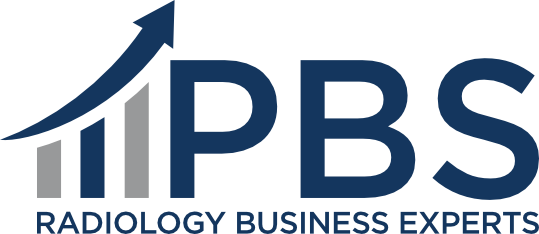June 6, 2024
By: Laura Manser, CPC, CDEO, CIRCC, CPMA, CEMC, RCC, Director of Provider Education
Introduction
In the specialized field of radiology, precise and complete documentation is not just a regulatory requirement—it is crucial for securing proper reimbursement and reducing the risk of denials. A well-structured Clinical Documentation Improvement (CDI) program tailored for radiology groups can significantly prevent down-coding and enhance the justification of medical necessity, key components in mitigating denials. This article provides a practical, step-by-step guide for radiology groups to implement an effective CDI program focused on these goals.
Step 1: Define Specific Objectives
The first step in setting up a successful CDI program is to set clear and focused goals. For radiology groups, these goals should specifically address:
- Prevention of Down-Coding: For example, you might aim to reduce the rate of down-coded claims by 15% within the first six months.
- Improvement of Medical Necessity Documentation: Often, physicians order tests, but the medical necessity is not clear. An example goal could be to achieve a 95% clean claims rate by ensuring all imaging orders include proper medical necessity documentation, reducing denials related to insufficient justification by 20% within a year.
Clinical documentation improvement is a proactive measure, which requires consistency and attention to detail. You should assume that all clinical documentation will be scrutinized at some point. Quantifiable and achievable goals are essential as they provide measurable targets that can be tracked and evaluated over time. Additionally, these goals should be directly tied to reimbursement outcomes, ensuring that improvements in documentation translate into tangible financial benefits. For instance, achieving a higher clean claims rate can directly lead to faster payment cycles and reduced administrative costs associated with claim rework and resubmission.
From a Payor Perspective:
- Compliance with Coverage Policies: Clear and comprehensive documentation ensures compliance with coverage policies.
- Reduction of Disputes and Audits: Reduces the likelihood of disputes and audits, which can delay payments and impact cash flow.
- Financial Stability: Addressing documentation errors proactively safeguards revenue streams, enhances operational efficiency, and strengthens financial stability.
Step 2: Engage Radiologists from the Start
Getting radiologists on board early is crucial for the CDI program’s success. Find leaders within the group who are keen on documentation and coding aspects and can influence their peers. These leaders can offer valuable insights during the planning phase, helping to customize the CDI program to fit the radiologists’ workflow without adding excessive burdens. Regular, focused
discussions can help highlight the direct link between thorough documentation and proper reimbursement. Radiologists play a critical role in the documentation process, and their engagement ensures that the program is practical and effective from a clinical perspective.
Ways to Engage Radiologists:
- Regular Meetings: Schedule regular meetings to discuss progress and address any concerns or challenges faced by the radiologists.
- Feedback Mechanisms: Set up channels for radiologists to provide feedback on the CDI process, allowing for continuous improvement and adjustments. A formal review with a report of findings has a greater impact than communication to the provider on a case-by-case basis.
- Incentives: Consider implementing incentive programs for radiologists who consistently meet documentation standards, which can motivate and encourage best practices.
Step 3: Tailor Education to Radiologist Needs
Focused education is vital for the success of a CDI program. Organize training sessions that are concise and frequent, concentrating on common documentation shortcomings that lead to down-coding and denials. Demonstrating the risks of non-compliance, including lost payments, prepayment audits, and potential fines, is also effective. Utilize actual case studies from your group to illustrate how specific improvements in documentation can protect against revenue loss. Training should be practical and relevant, addressing the unique challenges faced by radiologists. Interactive workshops and e-learning modules can be effective ways to engage radiologists and technologists, ensuring they understand the importance of correct documentation and how it affects reimbursement.
Educational Methods:
- Workshops: Conduct hands-on workshops where radiologists can practice documenting under guidance and receive instant feedback.
- E-Learning Modules: Develop interactive e-learning modules that radiologists can complete at their own pace.
- Case Studies: Use real-life examples to highlight the impact of good documentation practices on reimbursement and compliance.
- Continuous Learning: Offer periodic refresher courses and updates on new regulations or changes in coding practices.
Step 4: Utilize Efficient Documentation Tools
Introduce practical tools that facilitate correct documentation.
- Cheat Sheets: Creating cheat sheets for common procedures that have specific documentation requirements or that are often down-coded due to missing details can be extremely helpful to the radiologist who may not be familiar with all the specific coding guidelines required for certain procedures such as ultrasounds. These cheat sheets can serve as quick reference guides during the documentation process, ensuring that all necessary information is captured accurately and completely.
- Technologist Education: Educating technologists on capturing patient symptoms and relevant clinical information can significantly improve the quality of documentation. Often, diagnosis data is captured early on in EMR systems, flowing from scheduling to technologist into the radiology report. By providing technologists with training on the importance of accurate and detailed patient information, the radiologists can receive more complete and useful data, reducing the documentation burden on them and enhancing the overall accuracy of the reports.
Regular Feedback:
Implementing a system for providing radiologists and technologists with regular feedback on their documentation can help find common errors and areas for improvement. For instance, monthly audits of a sample of reports can highlight trends in documentation deficiencies, which can then be addressed through targeted training sessions. Constructive feedback not only helps in correcting mistakes but also reinforces good practices, fostering a culture of continuous learning and quality improvement. Feedback sessions can also include discussions about recent changes in coding guidelines and payer requirements, ensuring that all team members are up to date with current standards.
Step 5: Continuous Monitoring and Adjustment
A CDI program must be adaptable to changing regulations, clinical practices, and technological advancements.
Regular Audits:
Set up regular audits to evaluate the effectiveness of the CDI strategies. Metrics such as rates of down-coding, denial frequencies, and response times to queries can be valuable indicators of the program’s performance. The extent and frequency of audits will vary, based on practice needs. The more reviews performed, over time, the less likely you are to find major problems. Continuous dialogue with the radiology team is essential to refine the program and ensure it meets its goals.
In-House and Outsourced Expertise:
Effective monitoring and adjustment of a CDI program may require a combination of in-house and outsourced expertise.
- In-House CDI Teams: Responsible for day-to-day documentation reviews, providing immediate feedback to radiologists, and ensuring compliance with current coding guidelines. These teams should regularly collect and analyze data on key metrics such as down-coding rates, denial frequencies, and average response times to coding queries. Advanced analytics tools can help in finding patterns and trends, allowing for more targeted interventions and training.
- Outsourced CDI Vendors: Provide added support by conducting comprehensive audits and offering an external perspective on documentation practices. They can benchmark a
practice’s performance against industry standards and provide specialized expertise in areas where the in-house team may need added support. Expectations from outsourced teams should include detailed audit reports, actionable recommendations for improvement, and ongoing training and support to address identified issues.
Setting Up an Audit Program:
To scope out and set up an audit program within a practice:
- Define the Scope and Objectives: Find the key metrics to be monitored, such as documentation completeness, accuracy, and timeliness.
- Develop a Structured Audit Schedule: Ensure regular reviews (e.g., monthly, or quarterly) to keep track of progress and find any emerging issues.
- Assign Dedicated Staff: Perform the audits or engage with an external vendor if additional expertise is needed.
Audit Process:
During the audits, randomly select a sample of radiology reports for detailed review. Evaluate these reports against established documentation standards and coding guidelines. Look for common issues such as missing information, incorrect coding, or inconsistencies in documentation. Summarize the findings in a report, highlighting both strengths and areas for improvement. Share the audit results with the radiology team and provide constructive feedback. Use the findings to inform ongoing education and training efforts, focusing on the areas where deficiencies were noted. Regularly revisit the audit program to ensure it remains aligned with the practice’s goals and adapts to any changes in regulations or clinical practices.
Step 6: Recognize Achievements and Cultivate Leadership
Acknowledging the contributions of individuals who excel in implementing CDI practices can motivate the entire group. Public recognition of successes in meetings or through internal communications can reinforce the value of everyone’s efforts. Finding and developing new leaders from these success stories can help sustain and evolve the CDI program. Recognition can take many forms, from certificates and awards to highlighting accomplishments in newsletters or during team meetings. Encouraging a culture of recognition fosters a positive working environment and motivates staff to keep high standards in documentation.
Recognizing Excellence:
- Certificates and Awards: Distribute certificates and awards to individuals who consistently meet or exceed documentation standards.
- Internal Communications: Highlight accomplishments in internal newsletters or bulletins.
- Leadership Development: Name top performers and provide them with opportunities for further leadership development and training.
Conclusion
For radiology groups, implementing a CDI program is a strategic move toward securing proper reimbursement through meticulous documentation. By establishing specific goals, engaging radiologists early, delivering targeted education, incorporating efficient tools, continuously monitoring progress, and celebrating achievements, your group can enhance documentation practices that directly translate into improved financial health.
 Laura Manser CPC, CDEO, CIRCC, CPMA, CEMC, RCC, is the Director of Provider Education at PBS Radiology Business Experts. With 24 years of radiology experience, she is a trusted subject matter expert in coding, auditing, and documentation improvement. A dedicated educator, Laura trains coders and physicians to enhance coding accuracy, documentation quality, compliance, and revenue optimization through tailored programs. Holding multiple certifications from AAPC and RCCB, Laura is known for her proactive leadership, strong work ethic, and commitment to excellence in radiology.
Laura Manser CPC, CDEO, CIRCC, CPMA, CEMC, RCC, is the Director of Provider Education at PBS Radiology Business Experts. With 24 years of radiology experience, she is a trusted subject matter expert in coding, auditing, and documentation improvement. A dedicated educator, Laura trains coders and physicians to enhance coding accuracy, documentation quality, compliance, and revenue optimization through tailored programs. Holding multiple certifications from AAPC and RCCB, Laura is known for her proactive leadership, strong work ethic, and commitment to excellence in radiology.


 Laura Manser
Laura Manser  Angie Wardlaw is a results-oriented, purposeful leader with over 20 years of accomplishments in healthcare operations and revenue cycle management. Angie is known for her creative and solution-driven skills and leads by building solid relationships with internal and external customers. She is passionate about helping others, streamlining processes, and producing effectual transformations. Before joining PBS as a Client Services Manager, Angie has been a vital member of the executive leadership team in both operational and revenue cycle roles in radiology and multi-specialty physician practice groups in North Carolina.
Angie Wardlaw is a results-oriented, purposeful leader with over 20 years of accomplishments in healthcare operations and revenue cycle management. Angie is known for her creative and solution-driven skills and leads by building solid relationships with internal and external customers. She is passionate about helping others, streamlining processes, and producing effectual transformations. Before joining PBS as a Client Services Manager, Angie has been a vital member of the executive leadership team in both operational and revenue cycle roles in radiology and multi-specialty physician practice groups in North Carolina. Laura Manser, CPC, CDEO, CIRCC, CPMA, CEMC, RCC, is
Laura Manser, CPC, CDEO, CIRCC, CPMA, CEMC, RCC, is